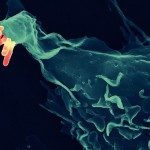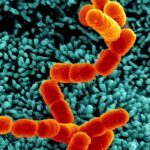Link to Pubmed [PMID] – 28522322
Methods 2017 08;127:12-22
Macropinocytosis is the uptake of extracellular fluid within vesicles of varying size that takes place during numerous cellular processes in a large variety of cells. A growing number of pathogens, including viruses, parasites, and bacteria are known to induce macropinocytosis during their entry into targeted host cells. We have recently discovered that the human enteroinvasive, bacterial pathogen Shigella causes in situ macropinosome formation during its entry into epithelial cells. These infection-associated macropinosomes are not generated to ingest the bacteria, but are instead involved in Shigella’s intracellular niche formation. They make contacts with the phagocytosed shigellae to promote vacuolar membrane rupture and their cytosolic release. Here, we provide an overview of the different imaging approaches that are currently used to analyze macropinocytosis during infectious processes with a focus on Shigella entry. We detail the advantages and disadvantages of genetically encoded reporters as well as chemical probes to trace fluid phase uptake. In addition, we report how such reporters can be combined with ultrastructural approaches for correlative light electron microscopy either in thin sections or within large volumes. The combined imaging techniques introduced here provide a detailed characterization of macropinosomes during bacterial entry, which, apart from Shigella, are relevant for numerous other ones, including Salmonella, Brucella or Mycobacteria.



